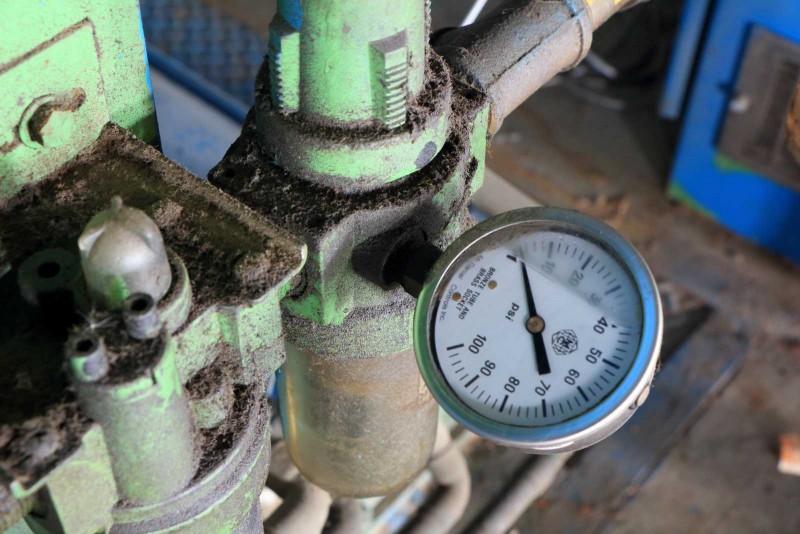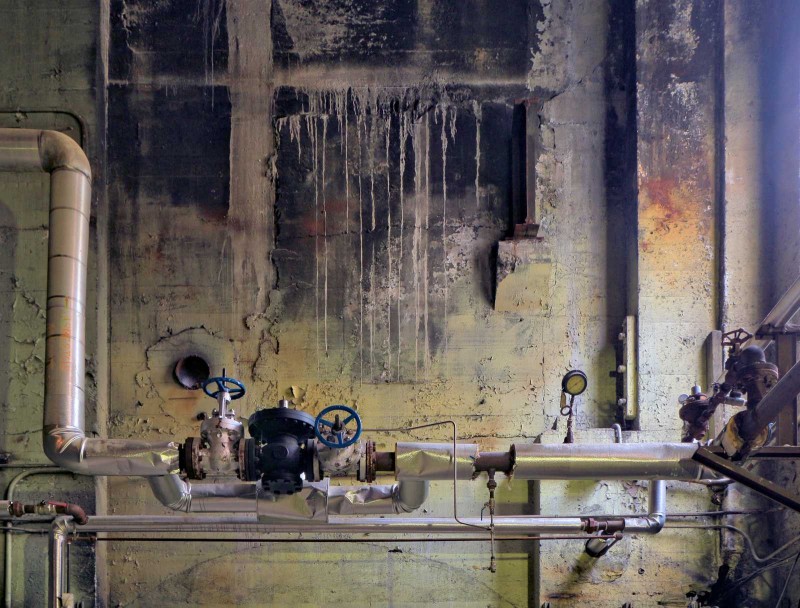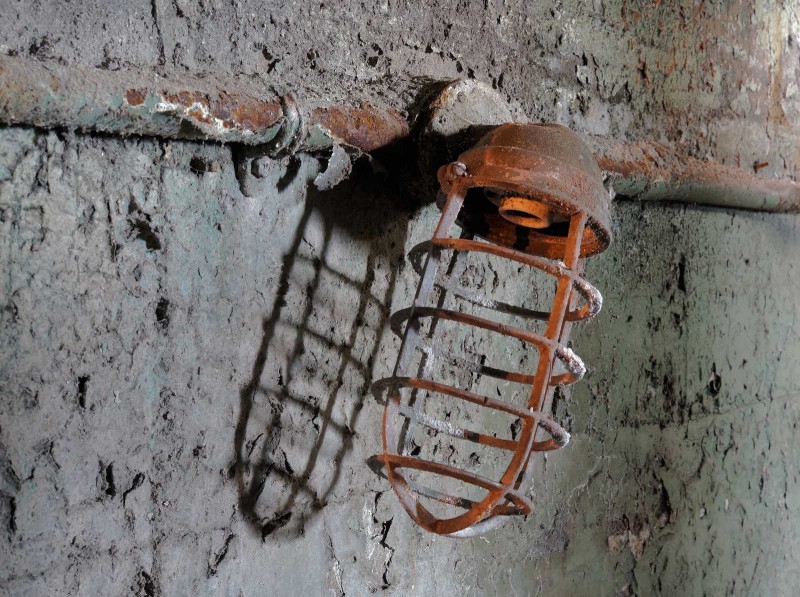Earlier I described how a team of volunteers marshalled by WHM is creating a complete visual historical snapshot of the former E. B. Eddy plant at the Chaudière Falls on the Ottawa River. But who are these people gamely spending sometimes exhausting days in often dark, dusty and damp spaces?
Many are retired, or university students, or employed in jobs that involve weekdays off. They are mostly photographers, recruited through local photo clubs, drawn by the unique opportunity to create visual images in a sometimes barren, or cluttered, sometimes magical, and always surprising environment to which few are ever granted access. Others – including students in history and library and archives programs – lend a vital hand carrying things, filling log sheets, measuring, and functioning as a second pair of eyes for the photographer, drawn not by the imagery opportunity, but by the chance to preserve history first hand.
A day on site for these volunteers is in many ways not unlike that of the shift-workers who once worked there. The team of four to six volunteers assembles at 8 AM. The WHM photographer in charge of the project meets the Windmill representative who unlocks the door nearest the work area of the day. The team receives assignments for the morning, and breaks into sub-groups by task.
Far more than just “taking pictures,” their endeavour is a serious and exacting one: to enable future researchers to explore the site as it exists today, and learn whatever an observer walking through the buildings today could learn. To do that, an “overview team” records each room’s floors, ceilings, and walls in overlapping image sets, while a separate team does the detail work, imaging every faucet handle, electrical instrument or machinery control panel, label, safety sign, boiler plate, light fixture, piece of furniture, or rusty unidentified… something-or-other.
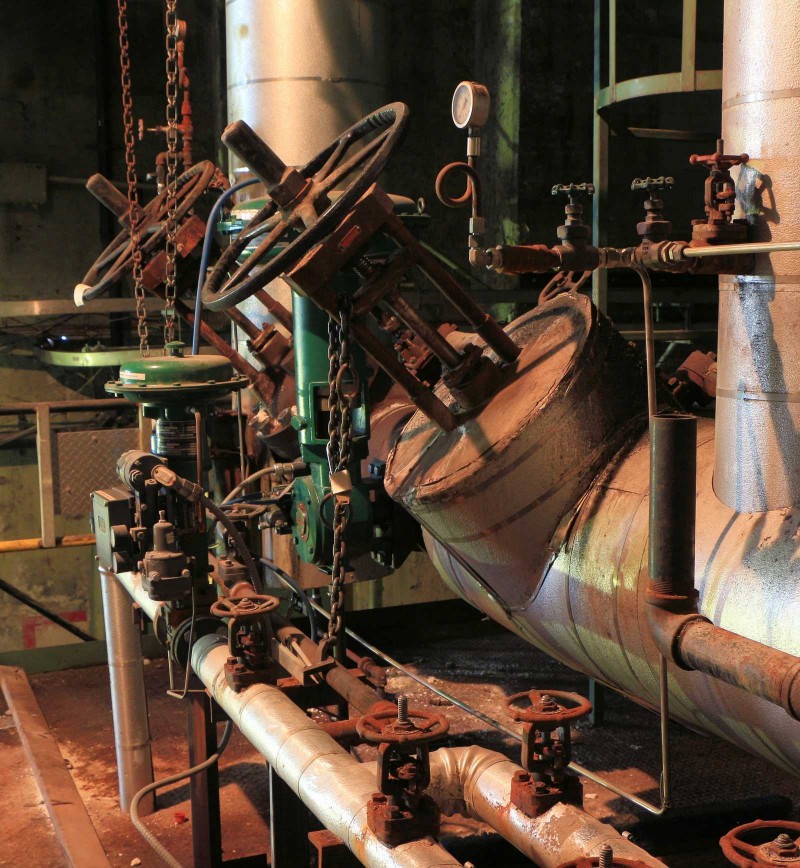
Although modern control panels had long-since been installed, and stood nearby, the steam plant’s massive manual valves were still in place.
The still imagery is supplemented by video cameras, which pan and record narration from former employees who describe what each room was like in operation.
Getting to the locale of the day from the office where equipment is stored between shoots involves a caravan-like procession. Standard kit for the team includes video and still-image cameras of specified minimum capabilities, always on tripods to assure crisp images from a stable platform; a nominally “portable” gel-pack battery for power for lighting in the places where the outlets don’t function, and the hand-held and clamp-mounted lighting itself. (It seems that even modern cameras won’t auto-focus or record images in the dark. Who would have guessed?)
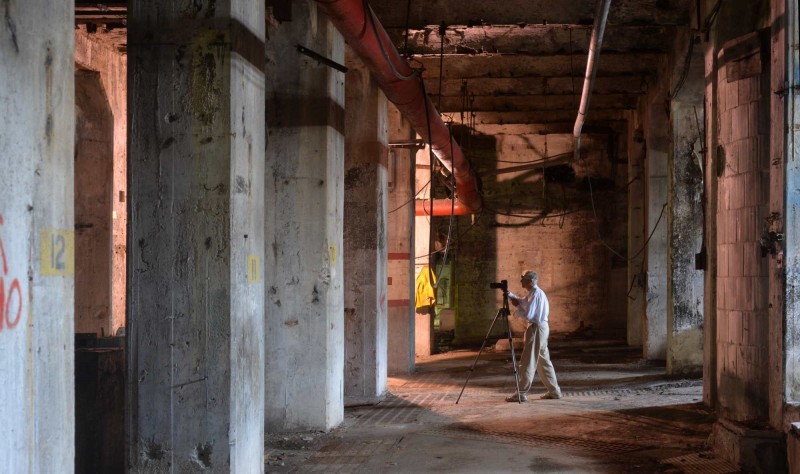
Volunteer Bill Woodley works among the mighty concrete basement pillars that once supported massive mill machines on the floor above.
There is a case with a first aid kit, spare batteries of multiple sizes, extra pens, markers, special-purpose lenses, tape measures, log sheets, and the ever-indispensable duct tape. Then there are the more humble necessities of record-keeping: low-tech clipboards that would have been recognizable by anyone who had worked at the factory in the last hundred years, bearing log sheets specially designed by the WHM photographer for the project.
Lest the paper records somehow be lost, the team also carries equally low-tech whiteboards and dry markers, on which building number, room, date, place, photographer, and other subject information is written, and photographed at defined intervals, to become a permanent part of the image sequence.
Lunch is held in the most pleasant spot available – an outdoor picnic table in good weather, a windowed office otherwise. It consists of a home-packaged lunch brought in containers the mill workers would have recognized. The noontime talk revolves around vacations, family, and the other minutiae of life, again just as the workers would have done. Then, with a gentle nudge from the supervisor, work resumes for the afternoon. At 4 PM or so, everyone books off and heads home. There is no night shift.
In the next entry in this series, I’ll reveal how we assure the images collected can be used to digitally reproduce the site for future research, and some of the marvels of the complex itself.
By Paul Harrison, WHM Official Photographer

